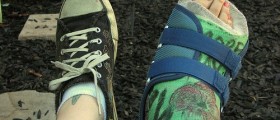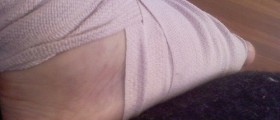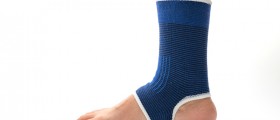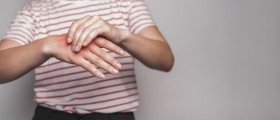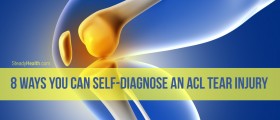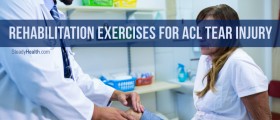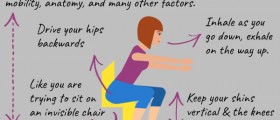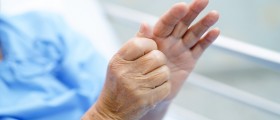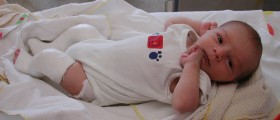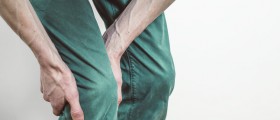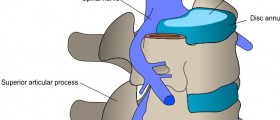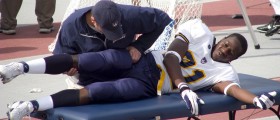Hi There "Guest".... nice to hear you have had a reasonably good outcome. I am definitely very interested in your progress. I have a similar situation, only my lisfranc is about 8 or so years old and is finally giving me significant problems. I am most worried about the 4th and 5th joints as they are pretty essential for walking. Sounds like they did the tendon interposition procedure for those two. Please be aware that an artificial ceramic joint has been used for those two joints as well with some success, although it's very early. There is a person who had them implanted for the 4th and 5th, but I never heard back how she did (google "ceramic" and "lisfranc" and you will see it). I am definitely tired of dealing with all the difficulties in finding a shoe that fits and with the pain on the top of my foot, etc. I was curious if you could tell me a little about what it is like to walk and if could bike if you wanted too (ie, mountain bike... aggressively... which I miss!). Do you think you could go for a long hike? What did they say about how joints of the 4th and 5th met would do over time after the tendon interposition? Best of luck!!!! You can email me at _[removed]_ as well
Loading...
I had an ankle and midfoot fusion over 35 years ago and had no problems until a few years ago. I now need more fusions and in great pain all of the time. Docs think the continuation of fusions would not be that helpful. My fusion were done between the age 22 through 24 yo.
Loading...
I know it's ben a while since you have posted on this thread, but I am new to the website and found all of your information extremely helpful. I am 22 and about to have a mid foot fusion after suffering a lisfranc injury. I injured my foot April of 2009. Since it's been over a year since you have updated this, have you had any trouble since your last posts? Being so young I am scared that the fusion may not hold on when I am 80, 90, or however long I live. I just haven't really heard of poeple my age having this done. I already had 3 screws put in and taken out after 3 months. I think of myself as in great shape and of grat health and I feel like I should have healed by now. Has anyone heard of the long term effects of the fusion? I haven't really talked to my doctor, but I go on the 15th. Thanks ahead for any information!
Loading...
hi Kimchico -
Glad to my information has been helpful. I have had some difficulties, but I would say I am ahead of the curve and have a plan for managing these difficulties. It sounds like you are on your way to getting a fusion of the medial two or three metatarsal - is this correct?
Overall, people appear to do well with this type of injury and fusion - it's just that your foot is stiff. It is important that you have it fused in the proper anatomical position so that your arch is the correct shape. There is a doctor in NYC at the hospital for special surgery who specializes in these issues - he went to Cornell, I forget his name. Any time you fuse a joint, you are at risk for arthritis in neighboring joints due to increased movement in those joints wearing them out. The risk of neighboring arthritis after fusion in the medial lisfranc joints appears to be lower. There are a few things that I would do to minize the risk of future arthritis:
- Regular xrays to see how your foot is doing with a GOOD podiatrist
- Use an orthotic that supports your arch, but has some shock absorption. The lisfranc joint is a shock absorber, so if it's fused or has limited mobility due to past dislocation your foot doesn't handle shock as well. I am of the opinion that some of the ensuing arthritis is not just due to movement, but also to excessive shock, so I use an orthotic that has HIGHER than normal arch and has some spring. Many people get a rigid orthotic, which I think is not optimal. I got my orthotics from , but had to modify them. I think they make the best orthotics as the inventor was previously an engineer and has a unique take on the funciton of the foot that has been very controversial. I have had to modify mine due to having too much pronation as my my arch is lower on that side and I correct it back to normal, which most podiatrists probably dont recommend. However, the arch is farther back and shock-absorbing so you are not as prone to plantar fasciitis. If you over-pronate (you will have to look these terms up) your arch will degenerate over time and you will end of with posterior tibialis tendonitis or worse tendinosis as well as problems in the lateral part of your foot AND plantar fasciitis. I used to have the all three very evident on MRI but after changing my orthotic and getting prolotherapy has eliminated the first and the last. It is very important that you step off the first metatarsal and that side of your foot takes more of the weight when standing and in your stride. If you need a fusion to do this I think that is ok. My first met is a little too high and my arch is lower so I have the higher arch in my orthotic doing some of this work. If you dont get close to normal gait mechanics you are more prone to wearing out the joints in your foot.
- Use an anti-inflammatory: I recommend fish oil from msucles, such as lyprinol. Also - SAMe, 5-loxin, chondroitin/glucosamine/ASU (cosamine ASU). I am not sure how well chondroitin glucosamine works as if one gets a midfoot dislocation, the joint capsule is probably no longer intact.
- Maintain mobility
- Keep your hamstrings LIMBER - tight hamstrings directly stress your midfoot and the rest of your foot
- Consider more advanced arthritis treatment:
1. Inhaled Salmon Calcitonin: I think the future of arthritis treatment will involve treating the underlying bone since that is involved in the disease process and what supplies all the nutrients - over time it gets hardened and developes cysts which affects the health of the cartilage. I use a treatment regimen that is close to treating oneself for osteoporosis, maintaing bone health
2. Ezorb: along the lines of above... I find this very helpful
3. Pentosan: this is a highly effective treatment for arthritis used in veterinary medicine. It may be in development for humans - not clera at this point. It is licensed to treat other things. There is a pharmacy in texas which supplies an inhaled form that many people find useful. It can act as a blood thinner so injecting it may be more dangerous and dispose you too internal bleeding if you experience trauma - this does not appear to be a problem with inhaled therapy. This risk is only during treatment, but the effects of the treatment last much longer if it works. This is also an antiinflammatory and helps the health of the underlying bone. I don't use NSAIDs because they likely cause the degenerative changes over time given while the inhibit inflammation, they also inhibit healing. I also dont do steroid injections for the same reason, although they may be eevn worse.
4. Intraarticular Growth Hormone; if you have advanced arthritis and think the midfoot joint doesnt need fusion, there is a Dr. Dunn in Florida that appears to be able to get cartilage to grow back with local growth hormone injections and being non-weight bearing for some time. I have not yet done this, but I think it is bonafide. There are many positive reports on forums for the knee, plus the science is there if you look at what happens in people with acromegaly (they have too much cartilage, which also damages a joint - thus they have problems as well). This is only approparite for a funcitonal or nearly functional joint - if you had a dislocation the midfoot joints might not function very well at this point and a fusion might be better. However, this may be useful to prevent problems with arthritis in neighboring joints.
5. Prolotherapy: if you have a weak lisfranc ligament after the dislocation I would have the lisfranc area under the foot treated multiple times with prolotherapy. There is a chance this will strengthen the damanged ligament enough to decrease whatever abnormal movement is occurring that may be contributing to arthritic changes. The arthritis after a lisfran injury is post-traumatic, which I am just guess means that the cartilage surfaces are no longer moving over each other in the correct fashion and thus wear out.
In general, it is most important to retain the funcitoning of the lateral 2 lisfranc joints as those are essential for foot movoement. I do not think the ceramic joints mentioned above work after discussing these issues with a podiatrist recently. I would bet there are other artificial joint arthroplasty procedures that do work though, but I havent read anything. I would monitor these joints for any problems and go the growth hormone treatment or consider having someone implant a matrix if there are problems. You dont want to fuse these joints. This should only be a problem area if you had a dislocation in the lateral part of your foot. Most people havent had this, but unfortunately I did. This is my problem area because my foot has a valgus deformity (like I am standing on a very thin wedge that tapers to the lateral side) and for many years my orthotic was too high on the lateral side of my foot, causing that side to wear too quickly. I have finally NEARLY fixed this after modifying my own orthotic. No orther podiatrist (seen 5) has been able to adjust this appropriately. I have not had any fusions at this point and plan on doing intraarticular growth hormone for the lateral side so that these joints last some time.
Hope that all helps
***edited by moderator*** web addresses not allowed
Glad to my information has been helpful. I have had some difficulties, but I would say I am ahead of the curve and have a plan for managing these difficulties. It sounds like you are on your way to getting a fusion of the medial two or three metatarsal - is this correct?
Overall, people appear to do well with this type of injury and fusion - it's just that your foot is stiff. It is important that you have it fused in the proper anatomical position so that your arch is the correct shape. There is a doctor in NYC at the hospital for special surgery who specializes in these issues - he went to Cornell, I forget his name. Any time you fuse a joint, you are at risk for arthritis in neighboring joints due to increased movement in those joints wearing them out. The risk of neighboring arthritis after fusion in the medial lisfranc joints appears to be lower. There are a few things that I would do to minize the risk of future arthritis:
- Regular xrays to see how your foot is doing with a GOOD podiatrist
- Use an orthotic that supports your arch, but has some shock absorption. The lisfranc joint is a shock absorber, so if it's fused or has limited mobility due to past dislocation your foot doesn't handle shock as well. I am of the opinion that some of the ensuing arthritis is not just due to movement, but also to excessive shock, so I use an orthotic that has HIGHER than normal arch and has some spring. Many people get a rigid orthotic, which I think is not optimal. I got my orthotics from , but had to modify them. I think they make the best orthotics as the inventor was previously an engineer and has a unique take on the funciton of the foot that has been very controversial. I have had to modify mine due to having too much pronation as my my arch is lower on that side and I correct it back to normal, which most podiatrists probably dont recommend. However, the arch is farther back and shock-absorbing so you are not as prone to plantar fasciitis. If you over-pronate (you will have to look these terms up) your arch will degenerate over time and you will end of with posterior tibialis tendonitis or worse tendinosis as well as problems in the lateral part of your foot AND plantar fasciitis. I used to have the all three very evident on MRI but after changing my orthotic and getting prolotherapy has eliminated the first and the last. It is very important that you step off the first metatarsal and that side of your foot takes more of the weight when standing and in your stride. If you need a fusion to do this I think that is ok. My first met is a little too high and my arch is lower so I have the higher arch in my orthotic doing some of this work. If you dont get close to normal gait mechanics you are more prone to wearing out the joints in your foot.
- Use an anti-inflammatory: I recommend fish oil from msucles, such as lyprinol. Also - SAMe, 5-loxin, chondroitin/glucosamine/ASU (cosamine ASU). I am not sure how well chondroitin glucosamine works as if one gets a midfoot dislocation, the joint capsule is probably no longer intact.
- Maintain mobility
- Keep your hamstrings LIMBER - tight hamstrings directly stress your midfoot and the rest of your foot
- Consider more advanced arthritis treatment:
1. Inhaled Salmon Calcitonin: I think the future of arthritis treatment will involve treating the underlying bone since that is involved in the disease process and what supplies all the nutrients - over time it gets hardened and developes cysts which affects the health of the cartilage. I use a treatment regimen that is close to treating oneself for osteoporosis, maintaing bone health
2. Ezorb: along the lines of above... I find this very helpful
3. Pentosan: this is a highly effective treatment for arthritis used in veterinary medicine. It may be in development for humans - not clera at this point. It is licensed to treat other things. There is a pharmacy in texas which supplies an inhaled form that many people find useful. It can act as a blood thinner so injecting it may be more dangerous and dispose you too internal bleeding if you experience trauma - this does not appear to be a problem with inhaled therapy. This risk is only during treatment, but the effects of the treatment last much longer if it works. This is also an antiinflammatory and helps the health of the underlying bone. I don't use NSAIDs because they likely cause the degenerative changes over time given while the inhibit inflammation, they also inhibit healing. I also dont do steroid injections for the same reason, although they may be eevn worse.
4. Intraarticular Growth Hormone; if you have advanced arthritis and think the midfoot joint doesnt need fusion, there is a Dr. Dunn in Florida that appears to be able to get cartilage to grow back with local growth hormone injections and being non-weight bearing for some time. I have not yet done this, but I think it is bonafide. There are many positive reports on forums for the knee, plus the science is there if you look at what happens in people with acromegaly (they have too much cartilage, which also damages a joint - thus they have problems as well). This is only approparite for a funcitonal or nearly functional joint - if you had a dislocation the midfoot joints might not function very well at this point and a fusion might be better. However, this may be useful to prevent problems with arthritis in neighboring joints.
5. Prolotherapy: if you have a weak lisfranc ligament after the dislocation I would have the lisfranc area under the foot treated multiple times with prolotherapy. There is a chance this will strengthen the damanged ligament enough to decrease whatever abnormal movement is occurring that may be contributing to arthritic changes. The arthritis after a lisfran injury is post-traumatic, which I am just guess means that the cartilage surfaces are no longer moving over each other in the correct fashion and thus wear out.
In general, it is most important to retain the funcitoning of the lateral 2 lisfranc joints as those are essential for foot movoement. I do not think the ceramic joints mentioned above work after discussing these issues with a podiatrist recently. I would bet there are other artificial joint arthroplasty procedures that do work though, but I havent read anything. I would monitor these joints for any problems and go the growth hormone treatment or consider having someone implant a matrix if there are problems. You dont want to fuse these joints. This should only be a problem area if you had a dislocation in the lateral part of your foot. Most people havent had this, but unfortunately I did. This is my problem area because my foot has a valgus deformity (like I am standing on a very thin wedge that tapers to the lateral side) and for many years my orthotic was too high on the lateral side of my foot, causing that side to wear too quickly. I have finally NEARLY fixed this after modifying my own orthotic. No orther podiatrist (seen 5) has been able to adjust this appropriately. I have not had any fusions at this point and plan on doing intraarticular growth hormone for the lateral side so that these joints last some time.
Hope that all helps
***edited by moderator*** web addresses not allowed
Loading...
That's alot of information I have never heard of.... nice to know there are other ways to go about getting better. I was a college cheerleader and am still under the care of the university's athletic program so I basically have to do what they tell me to do. So it looks like I will be having the fusion done at the end of the semester. I will keep in mind all of your information for post surgery needs. I'll keep you updated after the surgery and let you know how it goes. Thanks again for your input.
Loading...
kimchico - it occurred to me bit later to write a bit more about issues surrounding surgery to hopefully be of help to you and others. be advised that much of the information i have gathered is subjective and is only supported indirectly by medical literature (if at all!) largely because medical literature fails to address integrated treatment of nearly all illnesses and has a tremendous business and pharmacologic bias - only pharmaceutical companies can readily push treatments through the expensive and lengthy studies needed to establish something has clear effectiveness and manageable risk. this in it own right is prone to many biases, nevertheless, you will not find anyone to synthesize the information laid out here and before. thus - my conclusions are very subjective - so all should be taken with a grain of salt and done at your own risk, clearly (which i think is low).
and just for background - i had a fairly severe dislocation of all 5 of my metarsal-tarsal joints... enough so that many doctors came to look at my xrays out of curiosity - never good to be the 'interesting case'. most people on these boards did not have such a severe injury. despite this i rockclimbed for 5 years, did yoga aggressively, and frequently hiked. i have neck issues from another accident that has slowed me down, but i am confident that if i knew then what i know now i would have avoided many of the complications and hurdles. i currently walk without any visible abnormality in my gait and my foot hurts typically 1-2/10 throughout the day. it doesnt really slow me down although certain areas of discomfort are very psychologically troubling because i know they are more serious than others. i dont hike or run though. i believe the reason i did this well is due to very aggressive control of inflammation after my injury, immediate surgery, acupuncture during healing, and weight-lifting to keep my growth hormone up. within 30 minutes of my injury i had a bag of ice on my foot and it did not leave until just prior to surgery the next day. the doctors were surprised i had a lisfranc since i had very little swelling. i am laying this all out to highlight the importance of healing after surgery, since it occurred to me that you are coming up on surgery shortly.
if and when i get a fusion here are the things i plan on doing:
- very aggressive icing after surgery where possible - this means ICE, not cold packs. throw the cold packs away, especially in the hospital unless that's all you have. ongoing inflammation causes scar tissue to form which is prone to developing pain nerves and thus can be inherently painful. most pain indicates tissue damage, but scar tissue can be painful just by it's nature so you want to reduce this where possible. it is hard to ice after surgery due to dressing typically. ICE all during the post-surgical time. Cold causes all of your vessels to contract, squeezing out all the compounds that promote inflammation and ultimately scarring and allows blood to return, as circulation is suppressed in inflammation. Ice is your best weapon! I use it directly as a massage from a cup.
- wobezym or a serrapeptidase (serratiopeptidase) product: this breaks down fibrin - the ingredients of scar tissue - and helps control inflammation. i do not know about the research of using it after surgery and it's potential to alter healing, but i feel the risk outweighs the benefit, and i think it is highly unlikely it produces much of a negative effect. has to be taken in high dose on an empty stomach multiple times per day. you also dont want to have an infection and in the event you do this helps antibiotics penetrate by 'uncongesting' the injured area and likely decreases the likelihood of infection in the first place for the same reason. lots of people use this to keep chronic un-resolving infections at bay. NSAIDs likely inhibit healing much more.
- vitamin C: the REALLY dreaded but unusual bad effect of surgery is to develop complex regional pain syndrome or RSD. this will render you fully disabled so you want to take steps to avoid it. i am not well read in this area, but vitamin C appears to have some protective effect. local pain control is also very important. intense un-abating pain along with inflammation i would hazard underly the etiology of this problem as very intense pain causes changes in your spinal cord, which in turn can upregulate the pain. a local pain pump and pain medicine injected into the area before and after surgery should help. this should NOT be marcaine as this is toxic to cartilage - i would think most surgeon know this by now, although it's a relatively new finding.
- alpha lipoic acid or n-acetyl cysteine: the second most troublesome and more common complication in foot surgery is getting nerve damage or neuropathy. i would guess having a foot and ankle surgeon or a very good podiatrist do the surgery would be better as they know the anatomy more intimately and are less likely to cause trauma or cut sensory nerves. one would think there are ways to check in a superfiical physical exam to try and find some of the bigger nerves before surgery, but i have never heard of this. in the event they do get damaged, which is common, either of these supplements support nerve function and decrease the degree of damage that happens after trauma to nerves. i dont know of any significant downside to either of these. many people just have a little bit of burning/touch sensitivity/numbness that gets better over time.
- bone stimulator: you dont want to have a non-union and in the off chance wobenzym decreases any healing (i highly doubt it!) this is likely to make up all the difference. this is a machine that produces ultrasound or microcurrent in a way that simulates bone cells to be more metabolically active and essentially grow within a field. they are ridiculously expensive (many thousands of dollars) and are usually on good for a few hundred treatments due to the battery. they are highly over-priced medical equipment that should be the price of a ipod. you can buy used ones on ebay - just make sure they have many treatments left - people advertising them will probably inform you. i dont know which one is best.
- elevate your foot: after my dislocation my foot remained above my heart for 6 or more straight weeks with the exception of about 12 or so hours all added up. this decreases inflammation. i even raised the foot of my bed to help this at night, but still had my foot up on two pillows.
more than likely you will be fine as many people do seem to do better after fusion without complication. i have come across the problems i listed above in many different discussion groups so i am just telling you my take in how to prevent them as i try to maximize a good outcome. if you do do any of this, good luck in finding a doctor to buy into much of this, especially in the hospital!!!
best of luck with your surgery
and just for background - i had a fairly severe dislocation of all 5 of my metarsal-tarsal joints... enough so that many doctors came to look at my xrays out of curiosity - never good to be the 'interesting case'. most people on these boards did not have such a severe injury. despite this i rockclimbed for 5 years, did yoga aggressively, and frequently hiked. i have neck issues from another accident that has slowed me down, but i am confident that if i knew then what i know now i would have avoided many of the complications and hurdles. i currently walk without any visible abnormality in my gait and my foot hurts typically 1-2/10 throughout the day. it doesnt really slow me down although certain areas of discomfort are very psychologically troubling because i know they are more serious than others. i dont hike or run though. i believe the reason i did this well is due to very aggressive control of inflammation after my injury, immediate surgery, acupuncture during healing, and weight-lifting to keep my growth hormone up. within 30 minutes of my injury i had a bag of ice on my foot and it did not leave until just prior to surgery the next day. the doctors were surprised i had a lisfranc since i had very little swelling. i am laying this all out to highlight the importance of healing after surgery, since it occurred to me that you are coming up on surgery shortly.
if and when i get a fusion here are the things i plan on doing:
- very aggressive icing after surgery where possible - this means ICE, not cold packs. throw the cold packs away, especially in the hospital unless that's all you have. ongoing inflammation causes scar tissue to form which is prone to developing pain nerves and thus can be inherently painful. most pain indicates tissue damage, but scar tissue can be painful just by it's nature so you want to reduce this where possible. it is hard to ice after surgery due to dressing typically. ICE all during the post-surgical time. Cold causes all of your vessels to contract, squeezing out all the compounds that promote inflammation and ultimately scarring and allows blood to return, as circulation is suppressed in inflammation. Ice is your best weapon! I use it directly as a massage from a cup.
- wobezym or a serrapeptidase (serratiopeptidase) product: this breaks down fibrin - the ingredients of scar tissue - and helps control inflammation. i do not know about the research of using it after surgery and it's potential to alter healing, but i feel the risk outweighs the benefit, and i think it is highly unlikely it produces much of a negative effect. has to be taken in high dose on an empty stomach multiple times per day. you also dont want to have an infection and in the event you do this helps antibiotics penetrate by 'uncongesting' the injured area and likely decreases the likelihood of infection in the first place for the same reason. lots of people use this to keep chronic un-resolving infections at bay. NSAIDs likely inhibit healing much more.
- vitamin C: the REALLY dreaded but unusual bad effect of surgery is to develop complex regional pain syndrome or RSD. this will render you fully disabled so you want to take steps to avoid it. i am not well read in this area, but vitamin C appears to have some protective effect. local pain control is also very important. intense un-abating pain along with inflammation i would hazard underly the etiology of this problem as very intense pain causes changes in your spinal cord, which in turn can upregulate the pain. a local pain pump and pain medicine injected into the area before and after surgery should help. this should NOT be marcaine as this is toxic to cartilage - i would think most surgeon know this by now, although it's a relatively new finding.
- alpha lipoic acid or n-acetyl cysteine: the second most troublesome and more common complication in foot surgery is getting nerve damage or neuropathy. i would guess having a foot and ankle surgeon or a very good podiatrist do the surgery would be better as they know the anatomy more intimately and are less likely to cause trauma or cut sensory nerves. one would think there are ways to check in a superfiical physical exam to try and find some of the bigger nerves before surgery, but i have never heard of this. in the event they do get damaged, which is common, either of these supplements support nerve function and decrease the degree of damage that happens after trauma to nerves. i dont know of any significant downside to either of these. many people just have a little bit of burning/touch sensitivity/numbness that gets better over time.
- bone stimulator: you dont want to have a non-union and in the off chance wobenzym decreases any healing (i highly doubt it!) this is likely to make up all the difference. this is a machine that produces ultrasound or microcurrent in a way that simulates bone cells to be more metabolically active and essentially grow within a field. they are ridiculously expensive (many thousands of dollars) and are usually on good for a few hundred treatments due to the battery. they are highly over-priced medical equipment that should be the price of a ipod. you can buy used ones on ebay - just make sure they have many treatments left - people advertising them will probably inform you. i dont know which one is best.
- elevate your foot: after my dislocation my foot remained above my heart for 6 or more straight weeks with the exception of about 12 or so hours all added up. this decreases inflammation. i even raised the foot of my bed to help this at night, but still had my foot up on two pillows.
more than likely you will be fine as many people do seem to do better after fusion without complication. i have come across the problems i listed above in many different discussion groups so i am just telling you my take in how to prevent them as i try to maximize a good outcome. if you do do any of this, good luck in finding a doctor to buy into much of this, especially in the hospital!!!
best of luck with your surgery
Loading...
I am a 55 year old female and I had a mid foot fusion performed 2 years ago............Unfortunately it didnt knit after three screws and a plate. Although the pain isnt so much where it was in the top of the foot ....it is certainly painful in the two joints toward the ankle. I ended up with two bloodclots after the surgery and was on warfrin for 6 months.....The surgeon wants to perform surgery again and fuse the next two joints. I am very reluctant............for two reasons. I absolutely hated being unable to walk for 12 weeks and I am frightened that I will get the clots back again. I hope other people have had much more success than me. I have now just learned to live with the pain and the extra weight (because I cant exercise now)
Loading...
Thanks for your detailed account of your injury and subsequent surgeries. I am contemplating fusion (had ORIF 15 months ago) due to immense, constant pain. My question is - how are you doing now, after these few years? Are you back to normal or have you had further complications? Nay help is appreciated. Thanks.
Loading...
Hi Sadmelissa,
I am pleased for you that things are going well.
It has been 21/2 years that I have had my fusion and I am just walking 40 mins in the mornings now after all that time.
I still have some pain but nothing to what i had. I honestly believed that withing 12 months after the surgery I would be back to normal.
Wronggggggggg. It may take people longer than that so dont give up hope like I did.
Hope all goes well and I am interested in knowing how you are going.
Cheers Kerry
Loading...
Hi Kerry, I'm actually not doing very well at all but am very nervous to do fusion. I have read some good success stories but then I worry that I may not have that same success. It seems like you have not had great success. I am very sorry to hear that. Do you expect to get any better with time? I am meeting with my surgeon on Thursday to decide when or if I'll have fusion and I'm a basket case right now. I mean, I know this pain I have now, but I don't know what relief fusion will give me. Also, to go through all the non-weight bearing again and PT and everything is a nightmare I don't want to go through again...Did you start with ORIF and then have fusion later? What was your pain level prior to fusion? Thanks for your help.
Loading...
Kerry and Melissa - I'm posting here too. It won't let me send a private message to you, Melissa, unless I post 5 times! So here I go again.
PLEASE YOU GUYS - No antiinflammatories! I really think that is what caused my fractures not to heal the first time around. Read my other posts. It is too long to go into again. If your doctor hasn't heard about this, Melissa, ask him to call Dr. Mark Myerson. He WILL know who he is if your surgeon is a foot and ankle guy. He is a leader in the world.
On your other postings, I posted my story. I just found your first posting that has the actual story of your accident! I'm so sorry! I agree with Kerry - I think it is going to take a LONG time to get better. At 6 months, I'm doing pretty good, but I am a long way from being normal. As you will read in my other posts replying to yours, when I wake up in the morning I forget I'm not "normal" anymore until I step out of bed onto the floor. I think it would take a miracle to be completely better by 1 year, but I think everyone heals differently.
I don't know if I will ever hike a mountain again, but I know that you are right about boots. Tight firm shoes or boots are the best thing you can put on your foot after this. My trouble is that with the fusion, I have a hard time finding a boot I can actually get my foot into. The laces really have to open up. I never knew how much your foot actually has to "flex" in order to slide down into a pair of regular boots that don't have a zipper or laces. No way does my foot go into those anymore. However, I put a couple of pairs of about 4-inch heels on the other day, and my foot actually went into them for the first time in 6 months! YIPPEE! Trouble is, I was afraid to step down and put all my weight on that ball of my foot in that way, but at least I SAW my foot in a pair of heels again! :) I will most likely never walk in them.
I think you will be okay sadmelissa! I just say two things - read my story and also make SURE you get a second opinion. It doesn't have to be from my doctor that I gave information about....but the surgeon that didn't do my surgery right the first time around came HIGHLY recommended AND when I got back from having the fusion in Baltimore, my internist who took out my stitches - not knowing what had all transpired - recommended me to follow up with that same doctor who had screwed up my surgery that first time (the ORIF)!!!! I told her he was the one who had messed up and didn't really know what he was doing as far as fixing a Lisfranc with multiple fractures, and she was shocked because he is a very busy San Antonio foot/ankle guy....but he didn't know what he was doing in my case, apparently. I can't speak for any other cases. I just say - get a second opinion. The doctors work for YOU! You should never feel intimidated about that. I see that you have an appointment on Thursday - think about the second opinion if you haven't had one. (I saw 3 different docs after my foot "fell apart" after my hardware came out from my first surgery, and they were horrified at what was done initially and what the result they were seeing was.
Anyway - good luck Melissa! Please let us know how you do and what you decide.
PLEASE YOU GUYS - No antiinflammatories! I really think that is what caused my fractures not to heal the first time around. Read my other posts. It is too long to go into again. If your doctor hasn't heard about this, Melissa, ask him to call Dr. Mark Myerson. He WILL know who he is if your surgeon is a foot and ankle guy. He is a leader in the world.
On your other postings, I posted my story. I just found your first posting that has the actual story of your accident! I'm so sorry! I agree with Kerry - I think it is going to take a LONG time to get better. At 6 months, I'm doing pretty good, but I am a long way from being normal. As you will read in my other posts replying to yours, when I wake up in the morning I forget I'm not "normal" anymore until I step out of bed onto the floor. I think it would take a miracle to be completely better by 1 year, but I think everyone heals differently.
I don't know if I will ever hike a mountain again, but I know that you are right about boots. Tight firm shoes or boots are the best thing you can put on your foot after this. My trouble is that with the fusion, I have a hard time finding a boot I can actually get my foot into. The laces really have to open up. I never knew how much your foot actually has to "flex" in order to slide down into a pair of regular boots that don't have a zipper or laces. No way does my foot go into those anymore. However, I put a couple of pairs of about 4-inch heels on the other day, and my foot actually went into them for the first time in 6 months! YIPPEE! Trouble is, I was afraid to step down and put all my weight on that ball of my foot in that way, but at least I SAW my foot in a pair of heels again! :) I will most likely never walk in them.
I think you will be okay sadmelissa! I just say two things - read my story and also make SURE you get a second opinion. It doesn't have to be from my doctor that I gave information about....but the surgeon that didn't do my surgery right the first time around came HIGHLY recommended AND when I got back from having the fusion in Baltimore, my internist who took out my stitches - not knowing what had all transpired - recommended me to follow up with that same doctor who had screwed up my surgery that first time (the ORIF)!!!! I told her he was the one who had messed up and didn't really know what he was doing as far as fixing a Lisfranc with multiple fractures, and she was shocked because he is a very busy San Antonio foot/ankle guy....but he didn't know what he was doing in my case, apparently. I can't speak for any other cases. I just say - get a second opinion. The doctors work for YOU! You should never feel intimidated about that. I see that you have an appointment on Thursday - think about the second opinion if you haven't had one. (I saw 3 different docs after my foot "fell apart" after my hardware came out from my first surgery, and they were horrified at what was done initially and what the result they were seeing was.
Anyway - good luck Melissa! Please let us know how you do and what you decide.
Loading...
I really appreciate your response here twkw. I will look at the other info on anti-inflammatories but they seemed to help with swelling but were murderous on my tummy and I knowe they slow the healing process... I'm so glad (and excited!) to hear that you got into heels. I soooo want to wear heels again. I'm a woman, and we all know that heels just "make" an outfit. I really feel for you with your situation, I'm with you, ORIF does not work. It is such a failed method of treating Lisfranc injuries. i just wish I had of had the option of fusion 15 months ago....Well, hindsight is 20/20 right so here I am, facing a horrible surgery and recovery again but I sort of feel excited at the same time. AAt least with fusion I'd be in the home stretch. I can't live with this pain now and I know it will only get worse so I have my fingers crossed about the fusion but it's still daunting. I will keep you all posted on my next surgery but please wish me luck and good healing. I'll be looking for all of your support in the coming weeks....Take care :)
Loading...
Definitely good luck, and let us know when surgery is scheduled for after you see your doctor!
That's the worst part - thinking about doing it all again. But the funny thing is that it WAS easier the second time around because I KNEW what I was up against, so I bought a knee roller (no more crutches!) and I got a little dorky basket and attached it to the front so I could haul stuff around the house. I cooked a ton of food and froze it so I didn't have to cook much. Anything I could think of to do ahead of time... Just basically got prepared. That is a whole lot different than being completely unprepared right after your initial injury! So in that way, it is better.
Anyway - okay - let us know and GOOD LUCK!!!! :)
(Oh - a registration clerk at the hospital I had my first surgery at had had the exact same type of injury, and had been on crutches, she said, for a year! Yet she was walking around in heels around a year after that! They were lower heels - about 2-3 inches, but she was so happy to be in any at all! She was a trooper. She lived in a 2nd floor apartment, had stairs only to get up and down, and didn't have ANYONE to help her. She even went grocery shopping alone and had to carry groceries up stairs with crutches for a year. OMG - she was my hero.)
That's the worst part - thinking about doing it all again. But the funny thing is that it WAS easier the second time around because I KNEW what I was up against, so I bought a knee roller (no more crutches!) and I got a little dorky basket and attached it to the front so I could haul stuff around the house. I cooked a ton of food and froze it so I didn't have to cook much. Anything I could think of to do ahead of time... Just basically got prepared. That is a whole lot different than being completely unprepared right after your initial injury! So in that way, it is better.
Anyway - okay - let us know and GOOD LUCK!!!! :)
(Oh - a registration clerk at the hospital I had my first surgery at had had the exact same type of injury, and had been on crutches, she said, for a year! Yet she was walking around in heels around a year after that! They were lower heels - about 2-3 inches, but she was so happy to be in any at all! She was a trooper. She lived in a 2nd floor apartment, had stairs only to get up and down, and didn't have ANYONE to help her. She even went grocery shopping alone and had to carry groceries up stairs with crutches for a year. OMG - she was my hero.)
Loading...
Thanks for to great ideas - the cooking ahead of time and the apparatus mods. I am lucky that I will have attendant care (a nurse/PSW) with me for many weeks after the surgery so that will be a huge help as well. It's funny how I really do feel excited. Very strange. But I think it's because I have faith that fusion will be what makes me, dare I say, better? Not perfect, but better. Well, my appointment is tomorrow (to book surgery) and my stomach is going in circles but it has to be done. I will certainly be on here updating my progress. The sooner it's done the better. Too bad it's falling right in line with summer. :( Oh well, life goes on and there will be more summers to be had. Wish me luck, as I know you do, and I will be in touch! Take care.
Loading...



